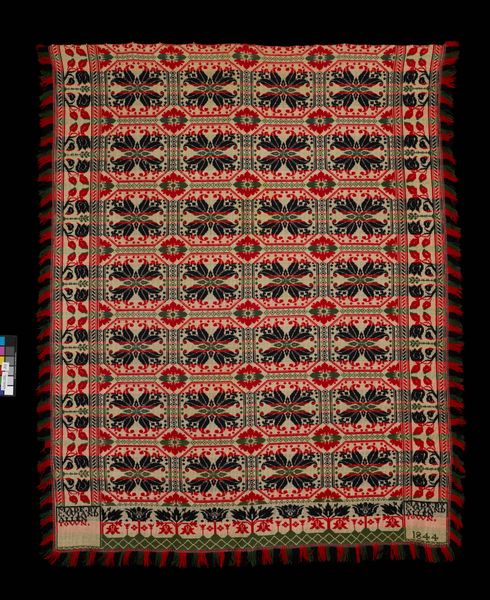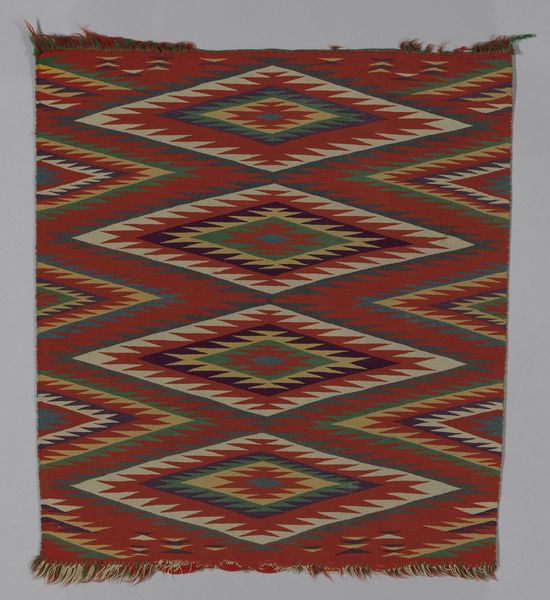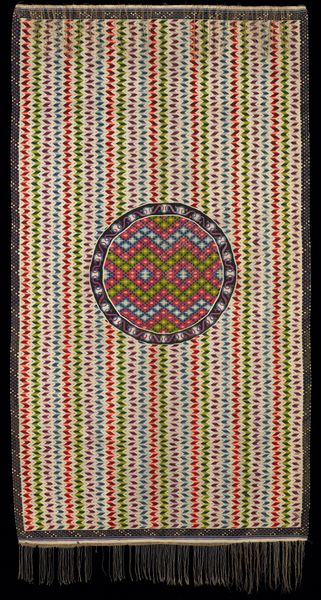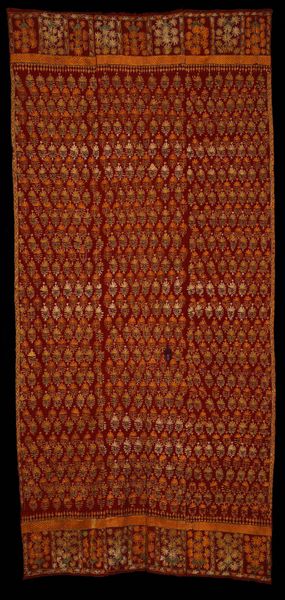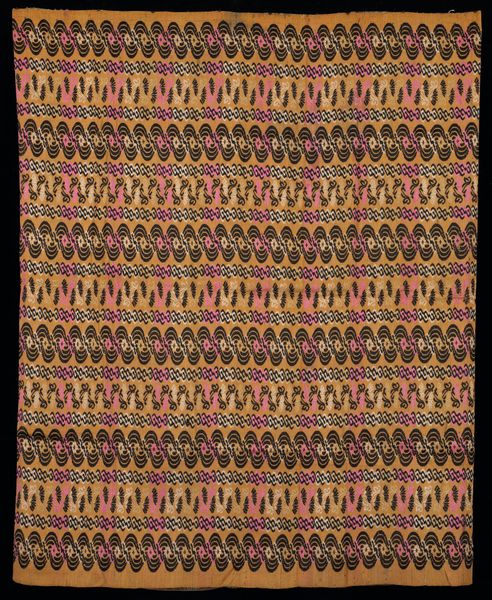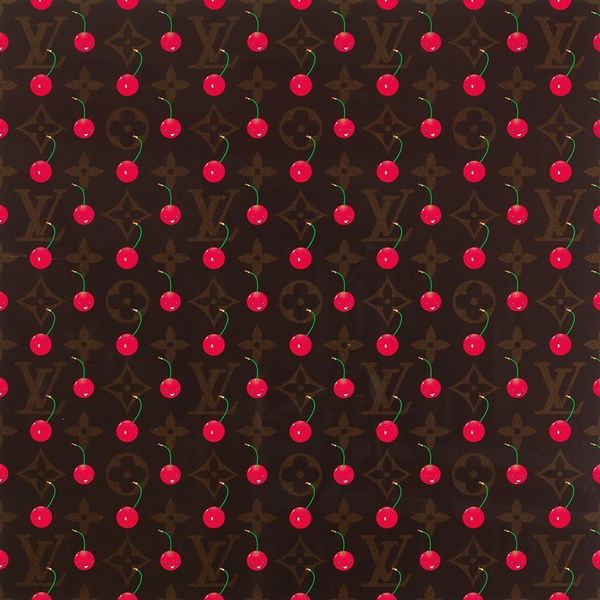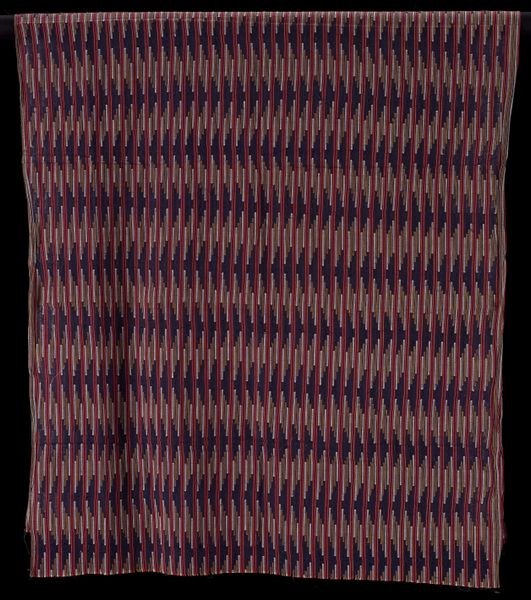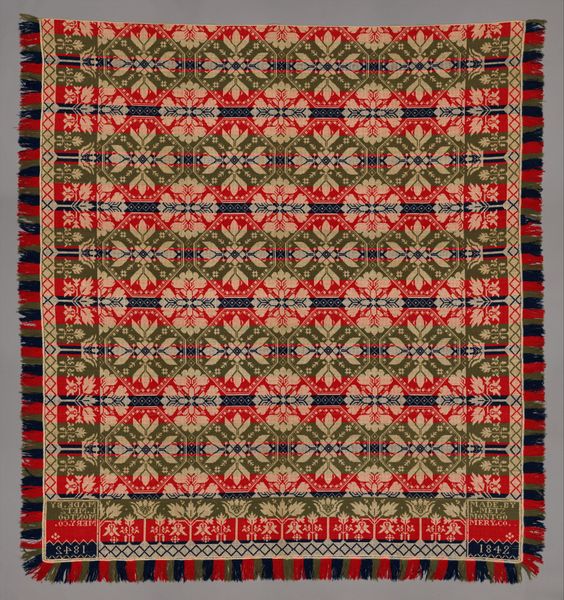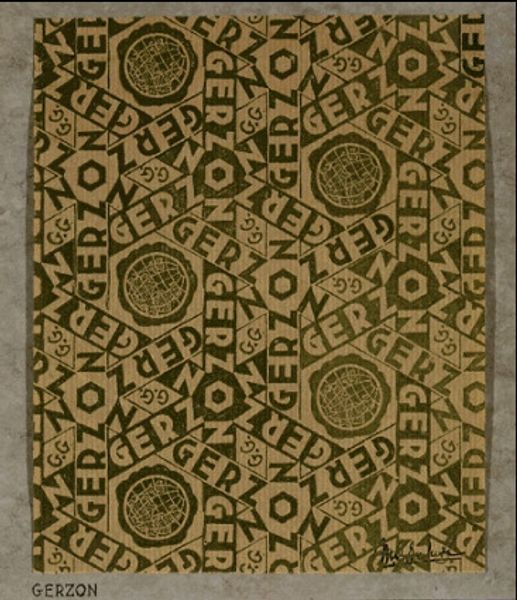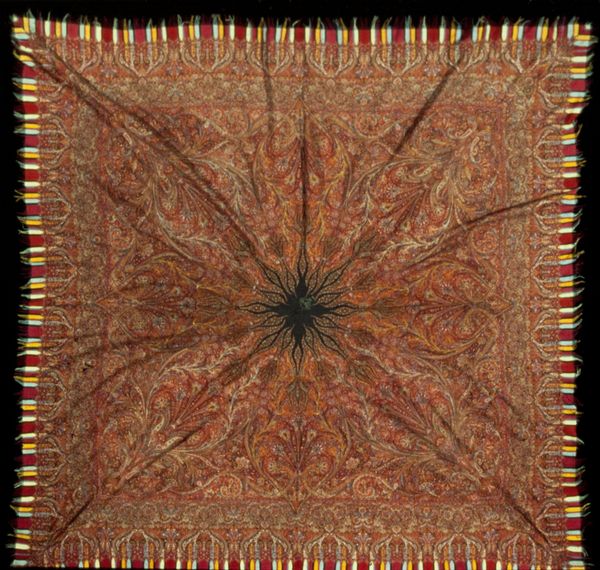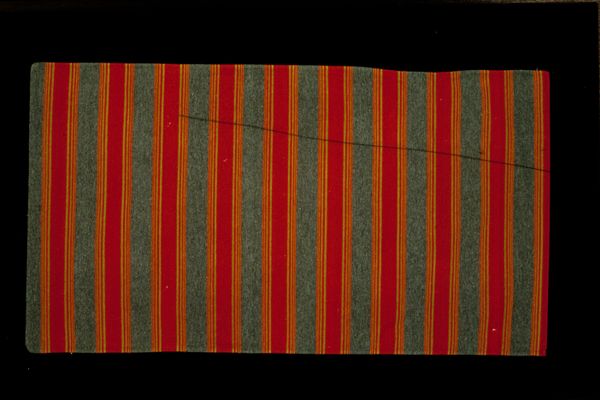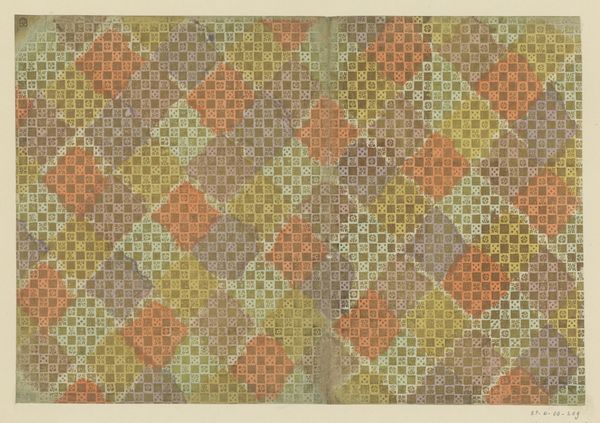
weaving, textile
#
weaving
#
textile
Dimensions: 79-1/4 x 72-1/2 in. (201.3 x 184.2 cm)
Copyright: Public Domain
Curator: This intriguing piece is an anonymous “Coverlet,” likely made between 1875 and 1890 and now residing here at the Minneapolis Institute of Art. Editor: Oh, wow. That’s quite a bold textile! There’s an intensity to it, almost overwhelming at first glance, yet there’s clearly an intentional symmetry pulling it all together. A field of stylized botanicals and patriotic symbols woven densely like a tapestry. Curator: Exactly, there's this really striking interplay of folk art motifs—buildings that seem a little classical mixed with quite dynamic stylized birds—along with what feels like a distinctly American patriotic fervor rendered through textiles. It is made in the tradition of early American jacquard weaving, demonstrating a shift from small local craft production towards something much more industrial. Editor: I hadn't considered its implications beyond craft—Jacquard weaving itself feels radical for its time, really. Suddenly patterns aren't painstakingly embroidered, but produced en masse through mechanical means. Think about the lives of the makers: predominantly working class women both free and enslaved, at home or factory labor. It brings questions of accessibility and who benefits from art front and center. Curator: It’s a curious collision, isn't it? The individual artistry that seeps through the anonymous nature of the piece makes me want to speculate about the human intention woven into this item meant for functional purposes, such as warmth and utility—while the overall visual program makes me think of celebrations. What type of events might this Coverlet had covered, literally or figuratively, to add layers of meaning for its makers and first users? Editor: Absolutely! Its inherent social role gives it profound importance, even if authorship isn’t recorded. This Coverlet embodies ingenuity born of constraint, turning basic need into an emblem of aspiration. You know, considering all these symbolic undercurrents, its anonymity almost deepens the art object into a cultural statement that invites broader participation. Curator: I think you have hit upon it. Seeing it through your lens expands the frame, really underscoring its impact beyond just an artifact to admire. Thank you! Editor: The pleasure was all mine. To reimagine our relation with our shared artistic fabric has an almost spiritual quality to it, when we give the opportunity.
Comments
No comments
Be the first to comment and join the conversation on the ultimate creative platform.
